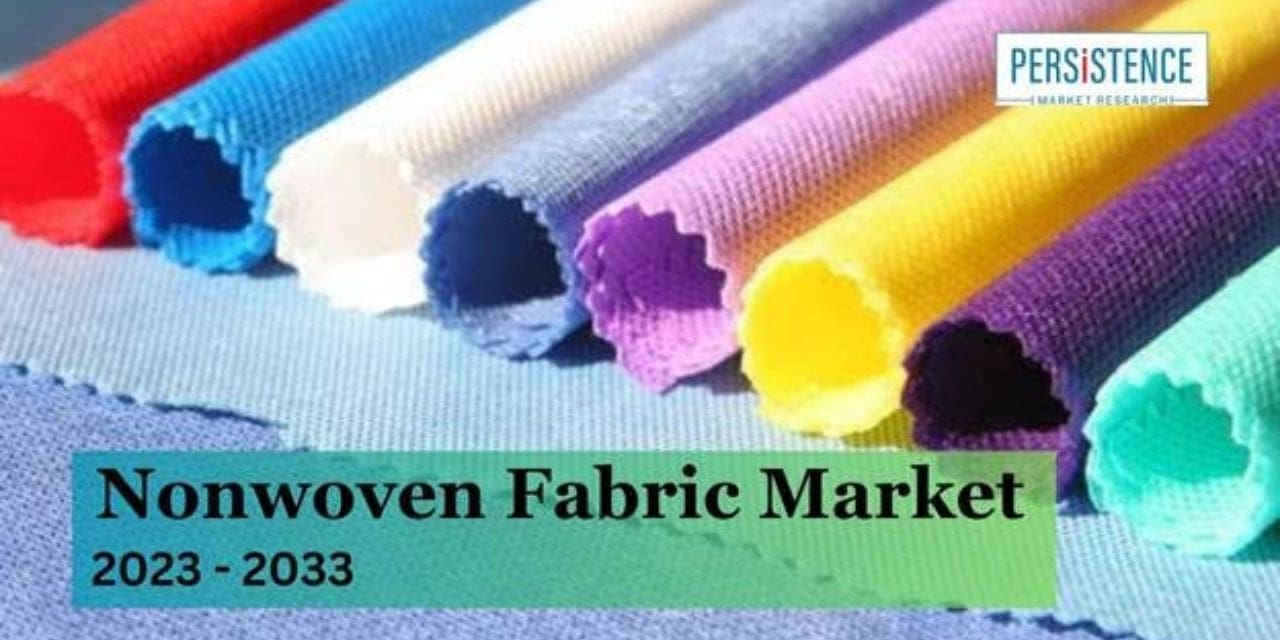Nonwoven fabrics have become indispensable materials across various industries due to their versatility, durability, and cost-effectiveness. These fabrics are manufactured by bonding or interlocking fibers using mechanical, thermal, or chemical processes, instead of weaving or knitting. The nonwoven fabric market has witnessed significant growth in recent years, driven by technological advancements, increasing demand from various end-use industries, and shifting consumer preferences towards sustainable and eco-friendly materials. This article delves into the innovations and demand surge propelling the growth of the nonwoven fabric market.
Market Overview: Nonwoven Fabric Market
Nonwoven fabrics, versatile materials made from fibers bonded together through various processes, find extensive applications across industries such as healthcare, hygiene, automotive, construction, and agriculture. The global nonwoven fabric market exhibits robust growth, driven by technological advancements, increasing demand for sustainable alternatives, and expanding applications across diverse sectors. Projections indicate a steady Compound Annual Growth Rate (CAGR) of 6.1%, with the market value expected to surpass US$86.2 billion by 2033.
Technological Innovations Driving Market Growth:
In recent years, technological innovations have revolutionized the nonwoven fabric manufacturing process, enhancing product quality, performance, and efficiency. Advancements in polymer science, fiber processing techniques, and machinery have played a crucial role in expanding the capabilities of nonwoven fabrics. Some key technological innovations driving market growth include:
a. Spunbond Technology: Spunbond nonwoven fabrics are produced by extruding continuous filaments of thermoplastic polymers and then bonding them together. Recent innovations in spinning techniques, such as multi-beam and bicomponent spinning, have enabled manufacturers to produce nonwovens with improved strength, uniformity, and softness.
b. Meltblown Technology: Meltblown nonwovens are manufactured by extruding molten thermoplastic polymers through fine nozzles and then rapidly cooling and solidifying the fibers to form a web. Advancements in melt-blown technology have led to the development of ultrafine fibers, enabling the production of nonwovens with superior filtration properties for applications in healthcare, personal protective equipment (PPE), and air filtration.
c. Composite Technologies: Composite nonwoven fabrics, combining multiple layers or types of fibers, have gained popularity due to their enhanced performance characteristics. Innovations in composite technologies have led to the development of nonwovens with tailored properties such as breathability, absorbency, and barrier properties, making them suitable for diverse applications in hygiene products, medical textiles, and geotextiles.
d. Sustainable Solutions: With growing environmental concerns, there is a rising demand for sustainable nonwoven fabrics made from renewable or recycled materials. Innovations in green chemistry, bio-based polymers, and recycling technologies have enabled manufacturers to produce eco-friendly nonwovens with reduced carbon footprint and enhanced biodegradability.
Increasing Demand from End-Use Industries:
The nonwoven fabric market is experiencing robust demand from various end-use industries, driven by their superior properties and cost-effectiveness compared to traditional textiles. Some of the key sectors fueling market growth include:
a. Hygiene and Personal Care: Nonwoven fabrics are extensively used in hygiene products such as baby diapers, feminine hygiene products, and adult incontinence pads due to their softness, absorbency, and fluid management properties. The growing global population, increasing awareness about personal hygiene, and rising disposable incomes are driving the demand for nonwoven-based hygiene products.
b. Medical and Healthcare: Nonwoven medical textiles, including surgical gowns, masks, drapes, and wound dressings, are witnessing high demand, especially in light of the COVID-19 pandemic. The emphasis on infection control, healthcare infrastructure development, and rising healthcare expenditures are driving the adoption of nonwoven materials in the medical sector.
c. Automotive: Nonwoven fabrics are widely used in automotive interiors, filtration systems, and under-the-hood applications due to their lightweight, noise reduction, and thermal insulation properties. With the growing automotive industry, particularly in emerging economies, there is a rising demand for nonwoven materials to enhance vehicle comfort, safety, and performance.
d. Construction and Geotextiles: Nonwoven geotextiles find applications in civil engineering projects such as road construction, drainage systems, and erosion control due to their high tensile strength, puncture resistance, and filtration properties. The increasing infrastructure development activities, urbanization, and environmental regulations are driving the demand for nonwoven geotextiles globally.
e. Packaging and Filtration: Nonwoven fabrics are used in various packaging applications such as shopping bags, protective packaging, and agricultural covers due to their lightweight, tear resistant, and moisture barrier properties. Additionally, nonwovens are employed in industrial filtration applications for air, liquid, and gas filtration due to their high efficiency and contaminant retention capabilities.
Shifting Consumer Preferences and Market Trends:
In addition to technological innovations and increasing demand from end-use industries, shifting consumer preferences and market trends are shaping the growth trajectory of the nonwoven fabric market:
a. Sustainability and Circular Economy: There is a growing emphasis on sustainability throughout the value chain, from raw material sourcing to end-of-life disposal. Consumers are increasingly seeking products made from renewable or recycled materials, driving manufacturers to adopt sustainable practices and develop eco-friendly nonwoven solutions. Circular economy initiatives focusing on material recycling and waste reduction are gaining momentum in the nonwoven industry.
b. Performance Enhancement: Consumers are demanding nonwoven fabrics with enhanced performance characteristics such as breathability, moisture management, and antimicrobial properties. Manufacturers are investing in research and development to innovate new materials and technologies that meet the evolving needs of consumers across various applications, including apparel, home textiles, and industrial products.
c. Digitalization and Industry 4.0: The adoption of digitalization, automation, and data analytics is transforming the nonwoven manufacturing landscape, leading to improved process efficiency, quality control, and customization capabilities. Industry 4.0 technologies such as artificial intelligence, the Internet of Things (IoT), and robotics are being integrated into production facilities to optimize operations and meet the growing demand for customized nonwoven solutions.
d. Market Consolidation and Strategic Partnerships: The nonwoven fabric market is witnessing increased consolidation as major players pursue mergers, acquisitions, and strategic partnerships to strengthen their market presence, expand product portfolios, and access new geographic markets.
The nonwoven fabric market is experiencing rapid growth fueled by technological innovations, increasing demand from diverse end-use industries, and shifting consumer preferences towards sustainable and high-performance materials.

